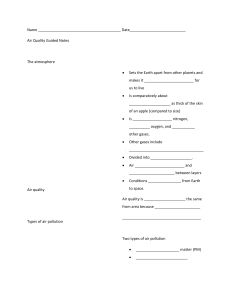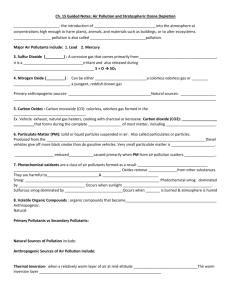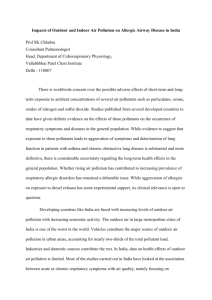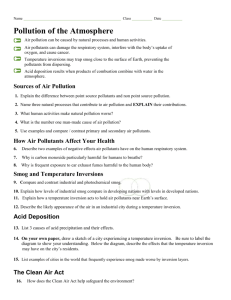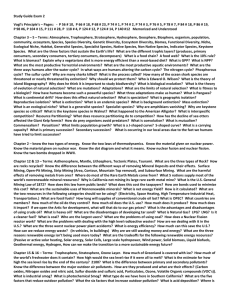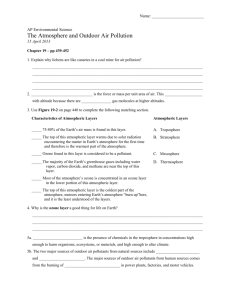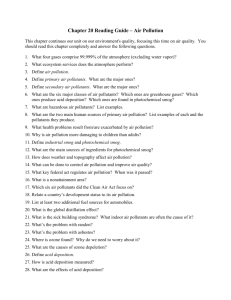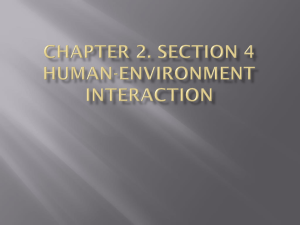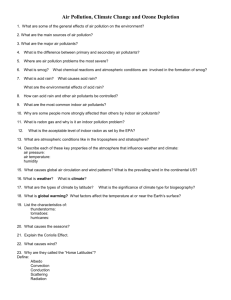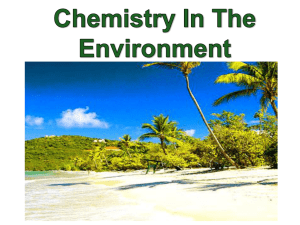Homework Assignment # 6 – Chapter 15
advertisement
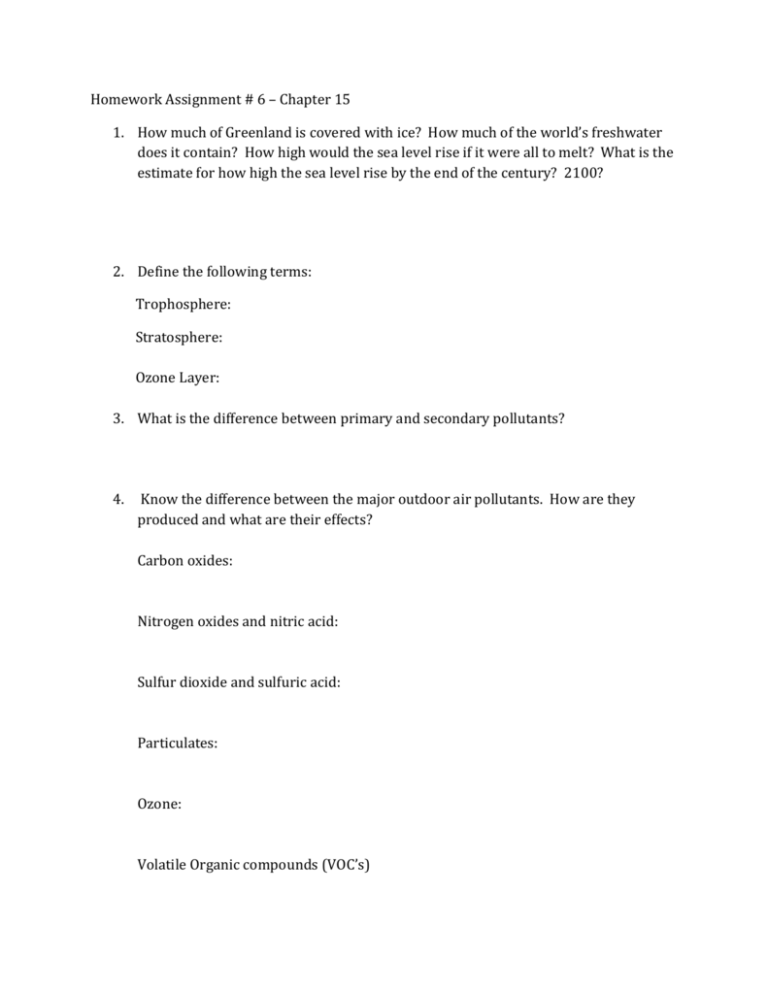
Homework Assignment # 6 – Chapter 15 1. How much of Greenland is covered with ice? How much of the world’s freshwater does it contain? How high would the sea level rise if it were all to melt? What is the estimate for how high the sea level rise by the end of the century? 2100? 2. Define the following terms: Trophosphere: Stratosphere: Ozone Layer: 3. What is the difference between primary and secondary pollutants? 4. Know the difference between the major outdoor air pollutants. How are they produced and what are their effects? Carbon oxides: Nitrogen oxides and nitric acid: Sulfur dioxide and sulfuric acid: Particulates: Ozone: Volatile Organic compounds (VOC’s) 5. What is industrial smog? What is photochemical Smog? What type do we have here in Southern California? 6. What are the five factors that reduce outdoor pollution? 7. What the six factors that increase outdoor pollution? 8. What is acid deposition? Where is this worse in the U.S? What are the harmful effects? How can it be reduced? 9. According to the World Health Organization (WHO), what is the most serious air pollution problem? Especially for who? What are the four most dangerous indoor air pollutants in developed countries? 10. How can we reduce outdoor air pollution? 11. How do we reduce indoor air pollution? 12. What are greenhouse gases? What was the level of CO2 in 1850? 2010? What is the estimates for 2050? 2100? What level is considered the tipping point? 13. What are the consequences for global warming? 14. What are the two basic approaches to dealing with the projected harmful effects of global climate disruption? 15. What is threatening the ozone layer? What damage does it do? How can we reverse it? Homework Assignment # 6 – Chapter 16 1. What is E-waste? Where is the U.S waste going? What is the cradle to grave approach? 2. What is solid waste? What are the two types? What is hazardous or toxic waste? 3. How much solid waste does the the U.S. produce? How much “MSW” does the U.S. generate each year? 4. What is integrated waste management? What are the three R’s? 5. What are the two types of recycling? How much of the MSW does the U.S. recycle? What are the advantages and disadvantages of recycling? 6. What are bioplastics? 7. What are the advantages and disadvantages of burning solid waste? 8. What are the advantages and disadvantages of burying solid waste? 9. How can we detoxify hazardous wastes? 10. What is RCRA? What is CERCLA? 11. How can we make the transition to low-waste socieites?
